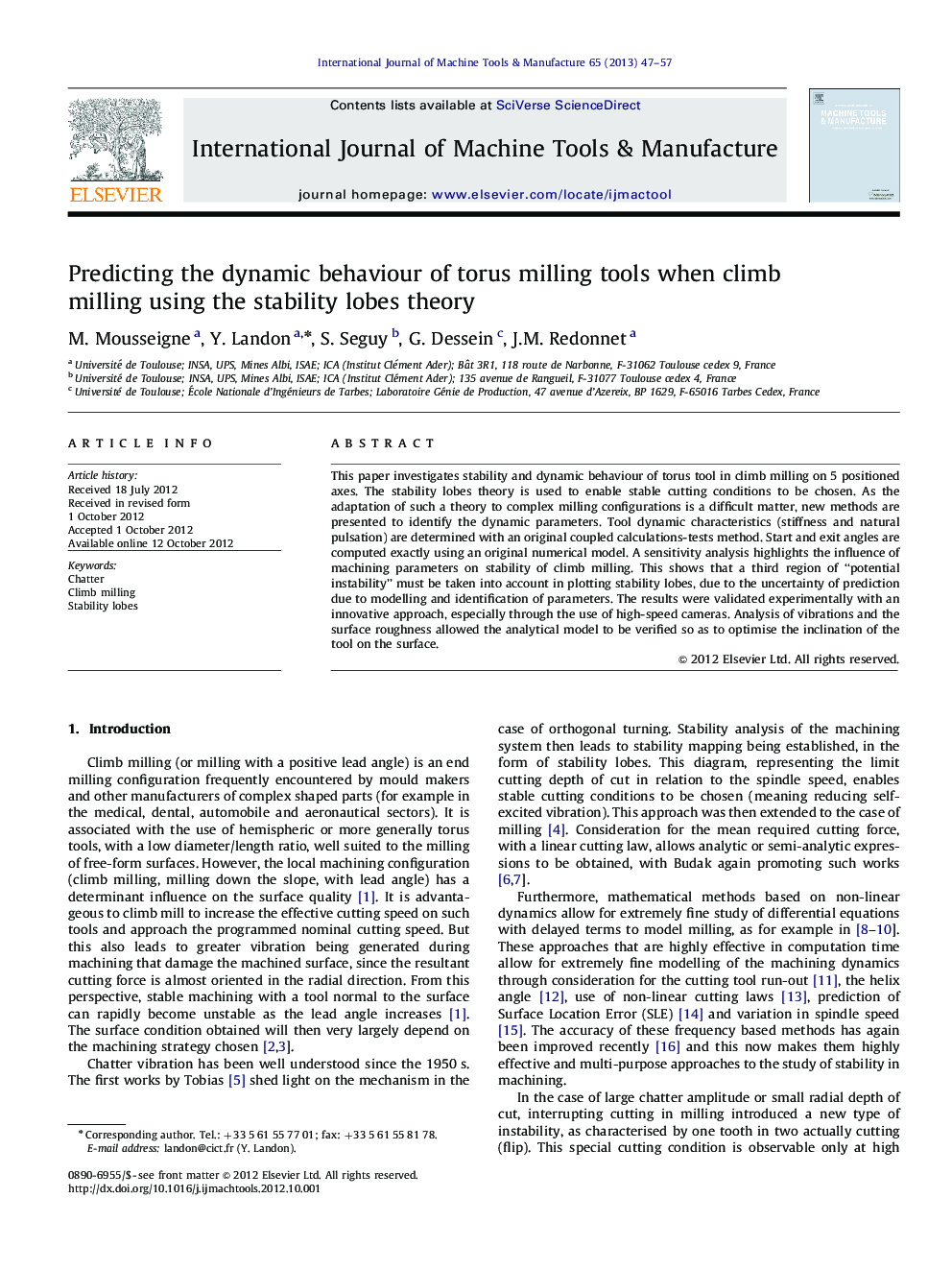| Article ID | Journal | Published Year | Pages | File Type |
|---|---|---|---|---|
| 781770 | International Journal of Machine Tools and Manufacture | 2013 | 11 Pages |
This paper investigates stability and dynamic behaviour of torus tool in climb milling on 5 positioned axes. The stability lobes theory is used to enable stable cutting conditions to be chosen. As the adaptation of such a theory to complex milling configurations is a difficult matter, new methods are presented to identify the dynamic parameters. Tool dynamic characteristics (stiffness and natural pulsation) are determined with an original coupled calculations-tests method. Start and exit angles are computed exactly using an original numerical model. A sensitivity analysis highlights the influence of machining parameters on stability of climb milling. This shows that a third region of “potential instability” must be taken into account in plotting stability lobes, due to the uncertainty of prediction due to modelling and identification of parameters. The results were validated experimentally with an innovative approach, especially through the use of high-speed cameras. Analysis of vibrations and the surface roughness allowed the analytical model to be verified so as to optimise the inclination of the tool on the surface.
► The stability lobes theory is readily applicable for tool chatter in climb milling. ► The approach proposed is validated by a confrontation with experimental results. ► High-speed cameras are an innovative tool to better understand dynamic behaviour. ► Uncertainties due to parameters identification influence stability limit accuracy. ► A third region of “potential instability” must be plotted with stability lobes.
